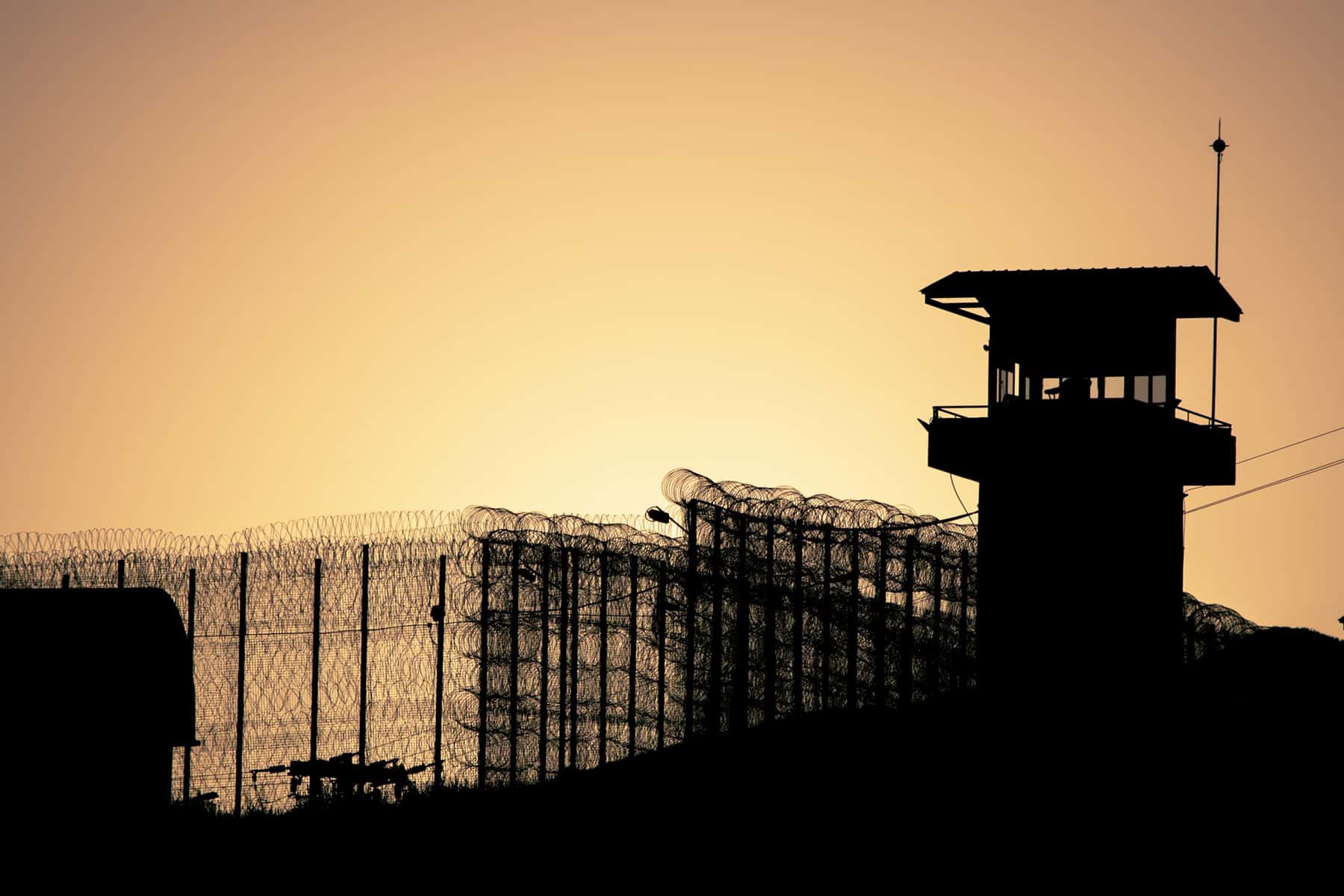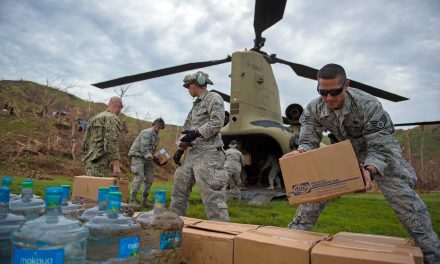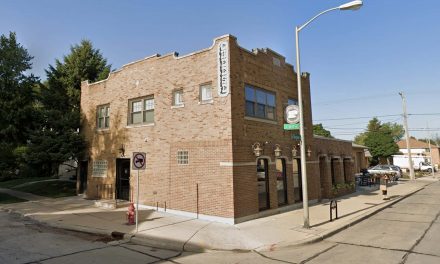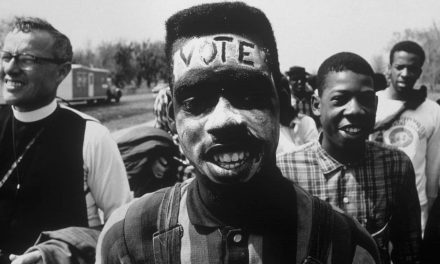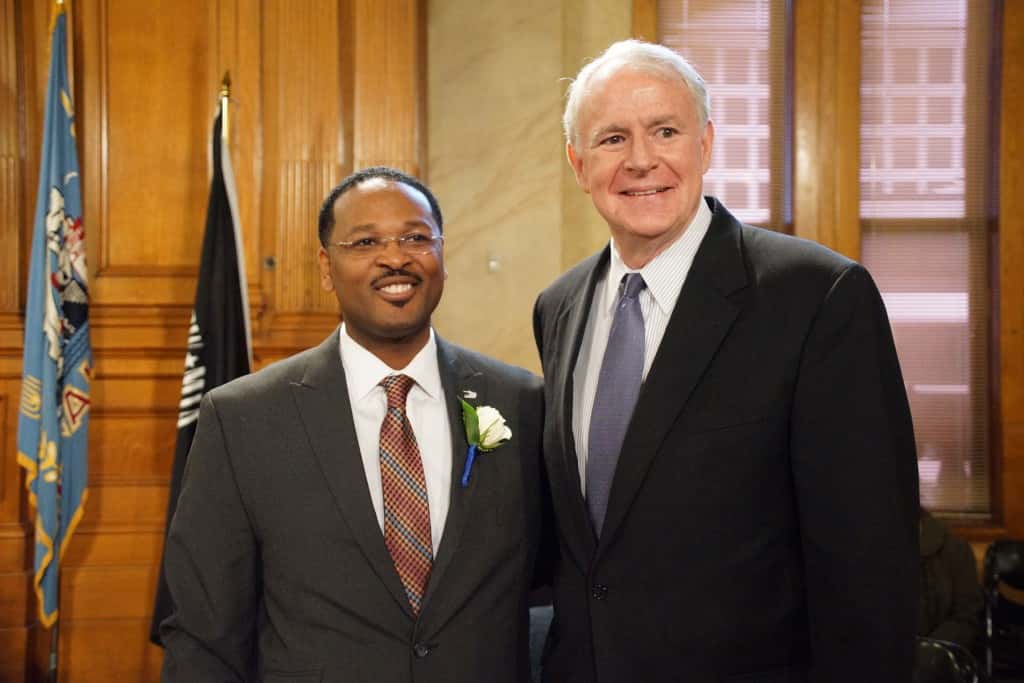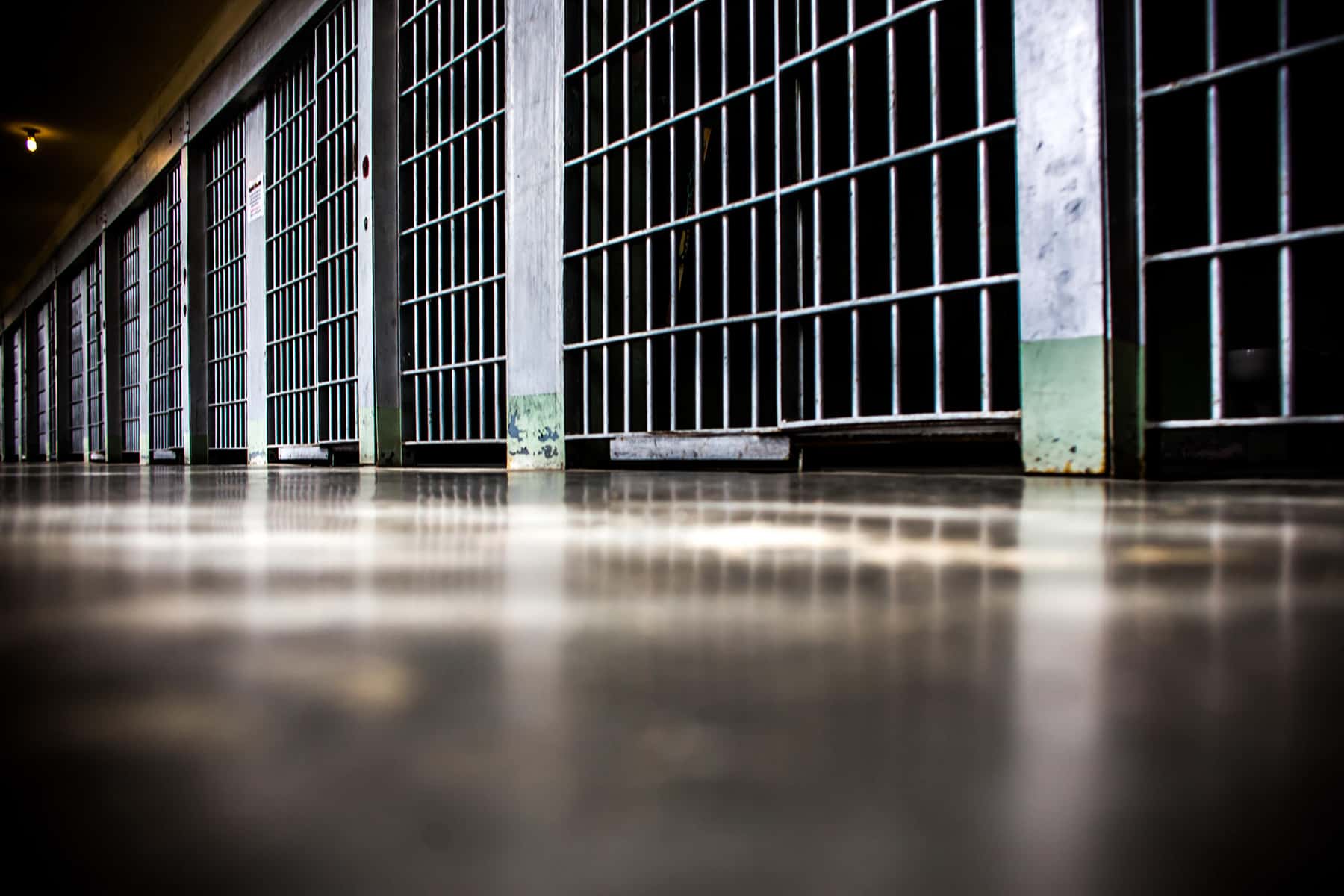
April 2020 will be the month when mass incarceration becomes mass murder in America: large-scale, foreseeable, preventable. Amidst all the tragedy that COVID-19 will inflict upon us, the reckless and avoidable deaths of tens of thousands of people in prisons, jails, and detention centers may be our nation’s greatest source of shame.
Infection curves will be maximally steep in incarcerated populations
Right now, the virus is insinuating itself into every one of the nation’s 6,000 prisons, jails, and detention centers. It is arriving on the breath or bodies of employees arriving for work or of prisoners being booked in or returning from court. And because social distancing is impossible in these compressed worlds, every institution of incarceration will maximize the height of its own infection curve.
We have known for months that SARS-CoV-2 (the virus that causes COVID-19) has up to a 2-week incubation period. New studies suggest that half of all people with the virus may be asymptomatic or pre-symptomatic and that over 80% of all infections may come from contact with individuals without symptoms. That means that even if a prison had space to isolate everyone who was symptomatic, that would not stop the spread of the virus. Essentially, we must assume that literally every single person who lives or works in our prisons, jails, or detention centers will be exposed to the virus over the next month and will become contagious.
Because of the steep infection rate, scarce medical resources inside a prison or jail will be exhausted in a matter of days, if not hours, as the disease manifests itself. Were hospitals willing to admit the sick and dying from prisons, prisoners would soon overwhelm those medical resources, too — even if they are not already over capacity, which many will be. Once triage begins, most hospitals will deny admission to incarcerated patients, especially those over 65 and the disproportionate number of people in them who have pre-existing conditions that make it less likely they would survive anyway.
These are not predictions, they are facts. In prisons in regions farther along on their curve, we have already seen the virus’s terrifying proof-of-concept. By the beginning of April, Rikers Island already had 231 confirmed cases among people living in the jail and nearly as many (223) among employees. Inmates were being offered $6/hour to bury the dead.
Noting that the rate of infection on Rikers and in other New York City jails was eight times higher than in the city itself, the Legal Aid Society declared, “New York City jails have become the epicenter of COVID-19.” Illinois’ infamous prison, Stateville, might dispute that title. There, so many men are sick that they have completely overwhelmed the local hospital, with many more cases awaiting at the prison. Hospital officials are demanding that sick prisoners be taken elsewhere. The director of the hospital fears that the death toll at the prison will exceed 100.
The stark consequence: Over 100,000 prisoners in the U.S. could die from COVID-19
America incarcerates 2.3 million people on any given day. The best available data suggest that approximately 1-2% of the general public who contract COVID-19 require intensive care. Most of those would die without that care. Incarcerated populations are demographically different from the general public in important ways. A mitigating factor is that inmates tend to be younger than the adult population outside. But on the flip side, a much higher percentage of the free world is under 18 (children are relatively unaffected by COVID-19). And people in prison have a much higher baseline of chronic disease than the general population, which is a huge risk factor for COVID-19.
Potentially making matters much, much worse in incarcerated populations: The higher the viral dose you are exposed to, the sicker you will get. If your initial exposure is high, your immune system has less time to respond and create antibodies before the virus replicates out of control.
Prisoners may well be exposed to the highest viral doses of any group in the country, possibly even higher than emergency room personnel: They are bunked in overcrowded cells with multiple other people who are likely to be contagious simultaneously. Many men in prison share a toilet without a lid, which can lead to transmission via both direct contact with feces as well as breathing in contagious “aerosolized feces.” Most prisoners don’t even have soap or hand sanitizer, let alone masks or other PPE.
And finally, as an already under-resourced health care system breaks down, inmates will be faced with an untenable choice: They can either abandon their sick friends to die with no care — or care for them themselves without soap and PPE, which will expose them to higher doses of the virus than almost anyone “outside” will face. Given those conditions, we estimate that between 1-5% of the U.S. incarcerated population — 23,000 to 115,000 people — will require high-quality intensive care for COVID-19 in the next few months. Almost none of them will get that care; thus, most of them will die.
Staff will be hit just as hard as those incarcerated
Meanwhile, the three-quarters of a million people who work in America’s institutions of incarceration — correctional officers, food service providers, counselors, recreation directors, nurses, maintenance workers — are themselves among those at highest risk of contracting COVID-19. Moreover, many prison employees are over 60 or have pre-existing health conditions that make them more likely to die or experience serious complications from the virus. Given the nature of their work, the infection rate will spike almost as sharply among the keepers as among the kept, and at the same time.
As these staff return to their homes, for a few days contagious but not yet symptomatic, their family members will also contract the disease in high numbers. Many of them will also die. Along with the obvious and horrible human costs of such a tragedy, staff will need to take additional time off to care for their sick household members and grieve for those who die, thus further reducing staff capacity.
At peak, a majority of custodial staff in many prisons and jails will be too sick, too scared, or too preoccupied with caring for or burying their own loved ones to come to work. It will fall to a skeletal staff to keep order, feed people, assist those who are sick, and eventually bury the dead in hastily dug graves.
Whether due to desperation on the part of those infected but not incapacitated, or rage at the inhumanity of it all, or perhaps the stench of rotting corpses, men and women trapped inside will eventually revolt. In a few prisons and jails, they may overwhelm their captors and escape. In a handful of smaller communities and even some larger ones (Baltimore comes to mind), their jailers may simply open the gates for them. But in most, revolts will be met with deadly force that may kill more people in prison than the virus itself.
Catastrophe could have been mitigated
It didn’t have to be this way. Some governors in red and blue states like Indiana, California and New York, have gone out of their way in recent years to embrace the humanity of people inside and to champion “second chances.” As California’s lieutenant governor and now governor, Gavin Newsom has spent hours inside prisons, engaged in deep conversation with incarcerated men about their ideas, hopes, and transformations. Indiana’s Gov. Eric Holcomb regularly visits Indiana’s women’s prisons, with such enthusiasm about the potential of the women inside that, for the last two years, his guests of honor at his State of the State addresses have been recently released women. Gov. Andrew Cuomo has tried to undo some of the enormous harm his father, Gov. Mario Cuomo, did as one of mass incarceration’s most ardent advocates and architects.
Throughout March 2020, each of these governors, and their counterparts in many other states, received increasingly fervent requests to release those serving short sentences and those who are at the highest risk of dying. Doing so would not only save many of those individual lives, but would also create needed space in the system. That would allow more social distancing as beds opened up, better opportunities to isolate infected populations, and make prisons much more manageable during a prolonged crisis when the officer corps will inevitably be depleted (much as the medical ranks have been thinned by illness in New York City).
We ourselves coauthored (with Michelle Daniels from Constructing Our Future, and with input from a range of post-incarcerated people and criminal justice advocates) an emergency proposal to the Indiana Department of Corrections. We outlined how Indiana’s prisons could safely reduce their population by up to 25% within a few days, putting everyone they released into quarantine in otherwise empty hotels and dorms for 14 days during which they would receive intensive re-entry services.
The governors have almost completely ignored these pleas. The brutal math of the exponential curve means that in most places they are now too late. Across the country, many if not most prisons and jails already have someone working or living inside who is infected, even if no one has as yet tested positive. It will only be a few short days or weeks before they, too, become the next Rikers Island.
Our leaders’ failure to act is itself criminal
The virus is what it is. Epidemiologists have given us a clear picture of what we can and should do until a vaccine is found. Chief among them is to flatten the curve so that new infections don’t outdistance our health care capacities. What that means, for most of us as individuals, is to physically distance ourselves to prevent chains of infection.
For governments, however, flattening the curve requires focusing on densely populated places whose inhabitants cannot isolate themselves, chief among them prisons, jails and immigrant detention centers. That, in turn, requires immediately and drastically reducing the number of people packed into them, especially those at highest risk of dying, and to do so before the virus infects them.
Yet, the vast majority of governors, judges, sheriffs, prosecutors, and legislators in this nation have willfully refused to take action — even though it would be relatively easy and effective to do so. They have been utterly naked about the reason: They would far rather that a hundred, a thousand, even tens of thousands of people in prison die, than that one person get out and harm someone in the free world. We’ve heard this sort of tough-on-crime political rhetoric before, except this time such a trade-off is not hypothetical. It is real and it is already playing out.
Our system of mass incarceration has always involved inflicting mental and physical harm on people in prison. All too often, individuals in prison die through neglect or intent; occasionally, they do so dozens at a time in group violence or uprisings. But the current pandemic, and the choices that those in power are making about who will be forcibly exposed to the virus and how they will be treated when they sicken, is another matter altogether. Never before have we had leaders consciously choosing to expose millions of those who they consider less than human — “offenders,” “cons,” “felons,” “junkies” — to a lethal virus in order to protect their own political interests, along with a theoretical — and tiny — number of potential victims who they do view as fully human.
Murder requires intent, so let us be clear: These will not be accidental or even incidental deaths. They will be the result of deliberate and informed choices to allow a despised subgroup to sicken and die when other choices could have been made to save them. These actions undoubtedly meet the bar for the “extreme indifference to human life” definition of second-degree murder: “[S]econd-degree murder occurs when a victim dies as a result of the perpetrator’s extreme indifference to the value of human life. Generally speaking, extreme indifference means an utter disregard of the possibility that an act will kill someone.”
Those officials to whom we have entrusted the lives of 2.3 million people are currently in the slow-motion process of killing a high percentage of them, as surely as if they had locked them in a barn and refused to open the door as a wildfire descended. We are under no illusions that these officials will ever be held accountable by the very criminal “justice” system that they lead. And we, the American public who voted these officials into office, are complicit in their crimes.
Too often, our country looks the other way when prisoners are exploited or abused. We must not let that happen this time. The very least we can do for the incarcerated people who will die in this pandemic — poets and mathematicians, fathers and grandmothers and daughters and brothers, people with hopes and dreams just as real as yours and ours — is to bear unflinching witness.
Kelsey Kauffman and Taren Stinebrickner-Kauffman
Originally published as When Mass Incarceration Becomes Mass Murder

